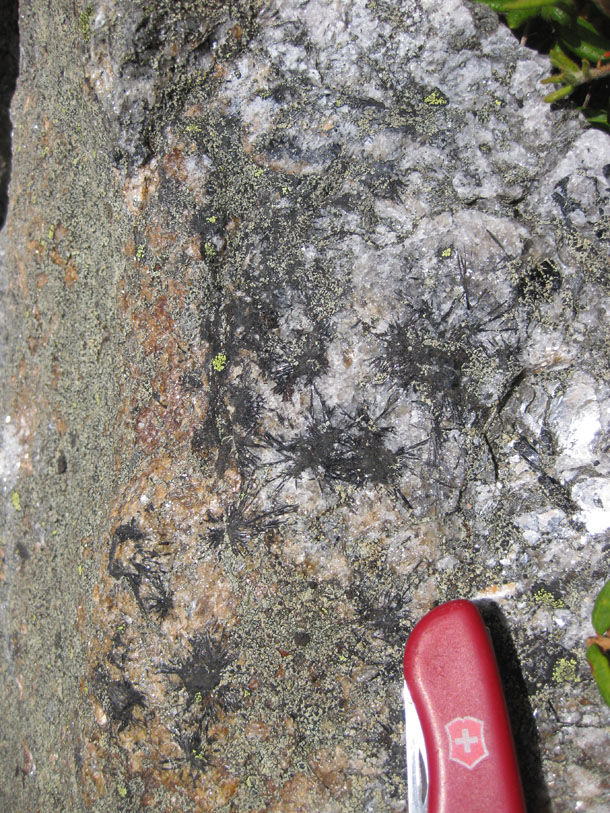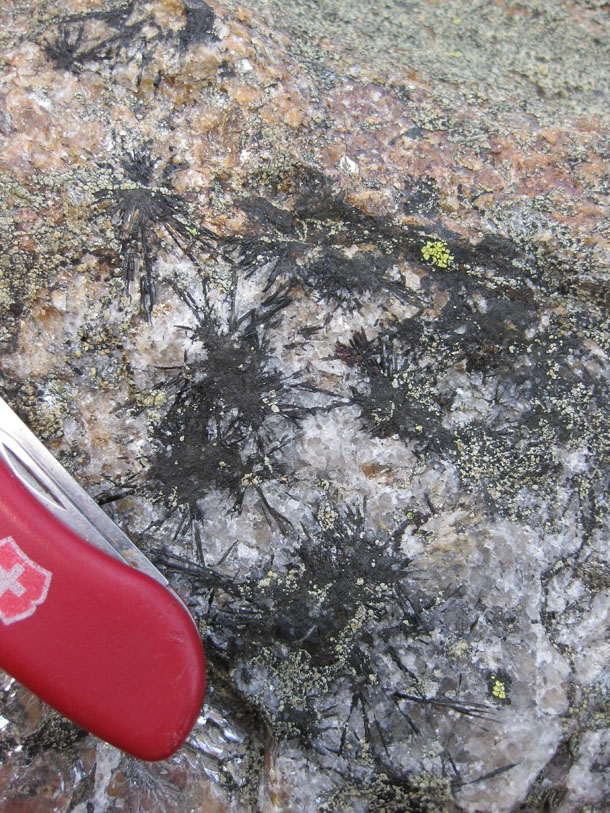Mystery mineral from Mount Washington, New Hampshire: radiating needles of something black…


I’d venture “tourmaline”… but you tell me.
Mystery mineral from Mount Washington, New Hampshire: radiating needles of something black…


I’d venture “tourmaline”… but you tell me.
I thought tourmaline as well, based on the areas with single crystals. Haven’t seen them in radiating aggregates before, though. Very cool!
Yup, looks like tourmaline to me. http://en.wikipedia.org/wiki/Tourmaline#Schorl
I’ll go for tourmaline, too, though I’ve never seen those starbursts look that sharp!
Another vote for tourmaline.
Im gonna vote for tourmaline as well…..but just to throw a monkey wrench in…black kyanite?
I’d venture tourmaline, though I like to see the characteristic end section and know the hardness.
Since it’s in pegmatitic quartz, my vote is also for tourmaline– tends to be common accessory in various pegmatites in of that part New England (but not always. 🙂 )
I concur with the others. Hornblende sometimes looks like that, but the setting in quartz tells me tourmaline.
I’ll go amphibole, having seen some amphibole splays like that in Maine.
Most likely tourmaline. Was this in a granite? There aren’t too many granites right around Mt. Washington. One thing that is becoming important to my paleostress study from Great Gulf is the occasional mineralization of tourmaline and quartz on joint faces. This was likely a precipitation from warm fluid. The mineral precipitates at something like 170C, off the cuff, and we have some new apatite fission-track data that gives us the cooling/exhumation history of Mt. Washington. Put them together and I can constrain the age of a tourmaline-encrusted joint! There is likely a lot of information in these little aggregates!
Without getting it under a microscope, I couldn’t tell for sure. I think tourmaline is the most likely, also hornblende is a good choice too. Another thought that came to me is Rutile because I’ve seen some rutile that had a similar crystalline look. Rutile is found in quartz associated with high pressure /temperature rocks – pegmatites, & skarns, Looking at the crystalline structure of the surrounding rock it makes me wonder about that. IThe problem with Rutile is it is not know to be from that area, so it most likely is one of the first two choices.
http://en.wikipedia.org/wiki/Rutile
Actinolite rays. Pretty common actually.
Not schorl or black tormaline.